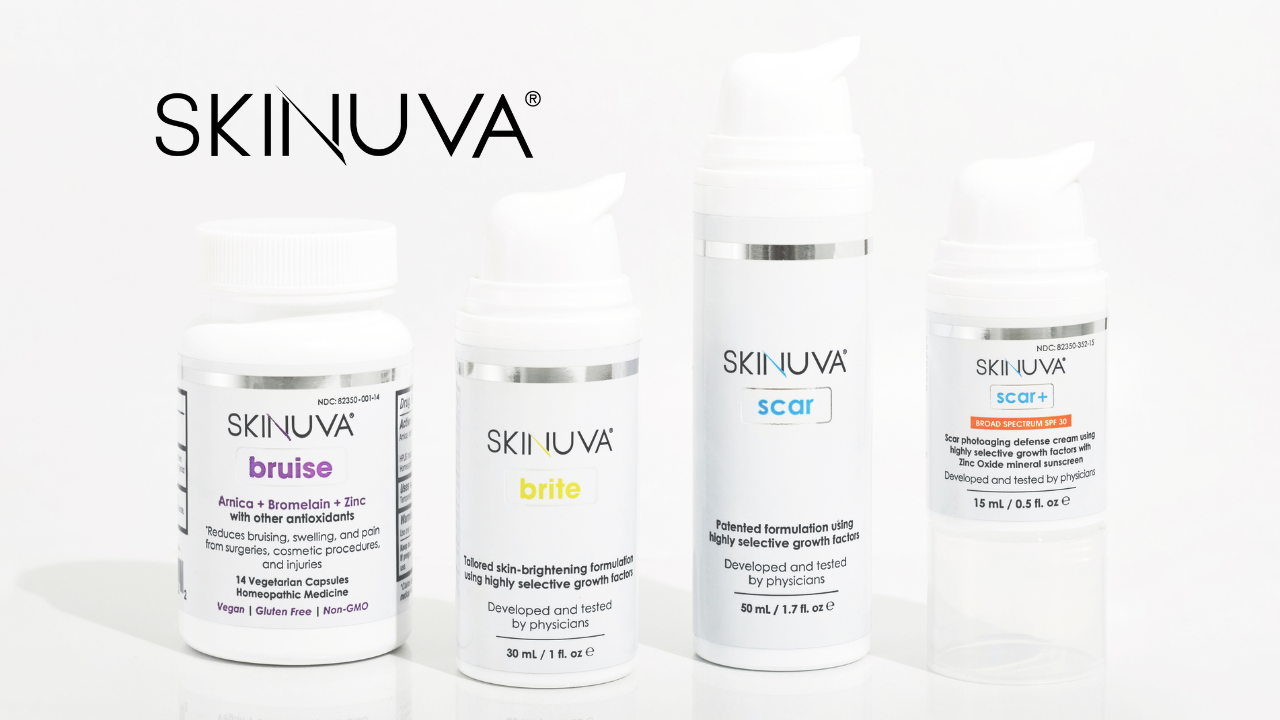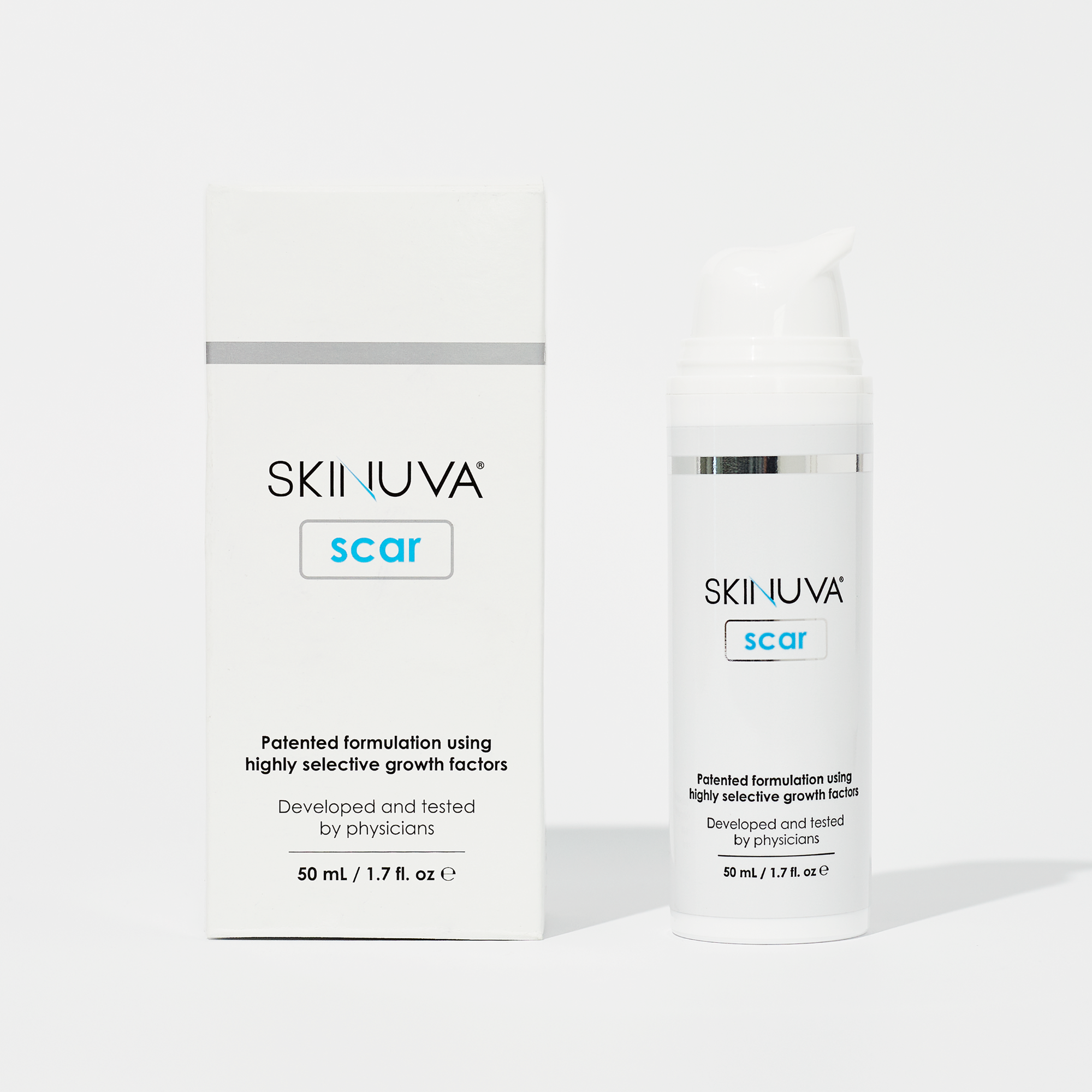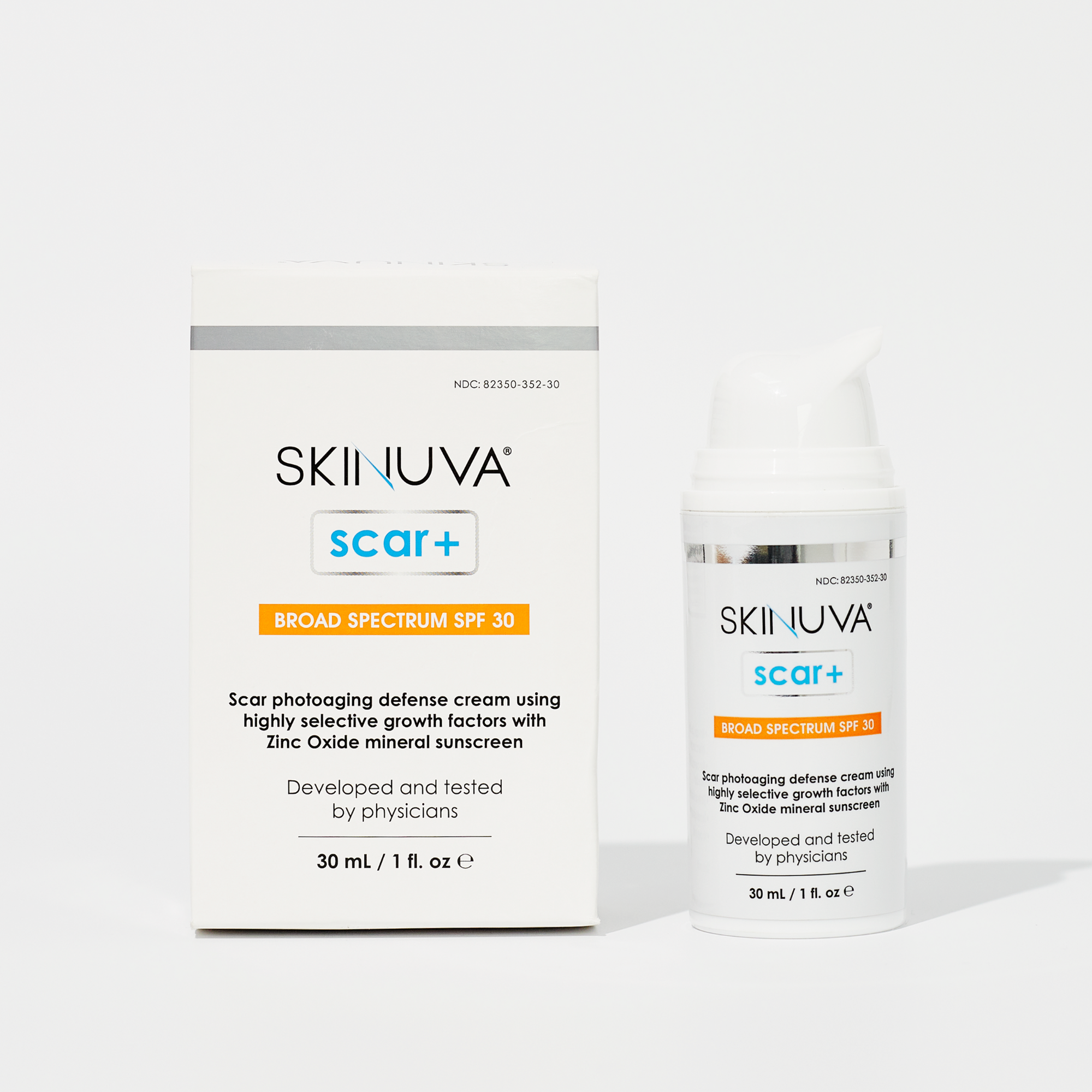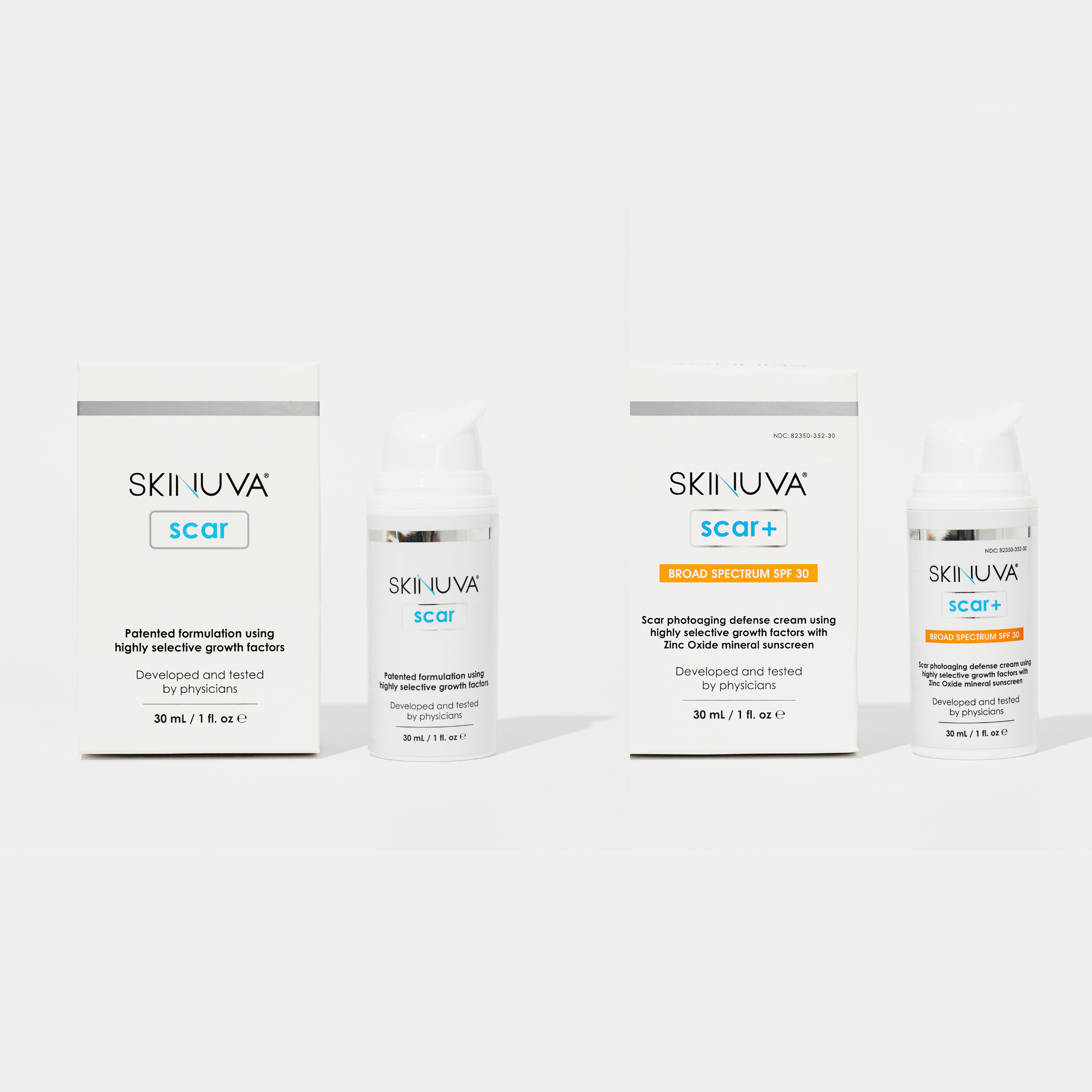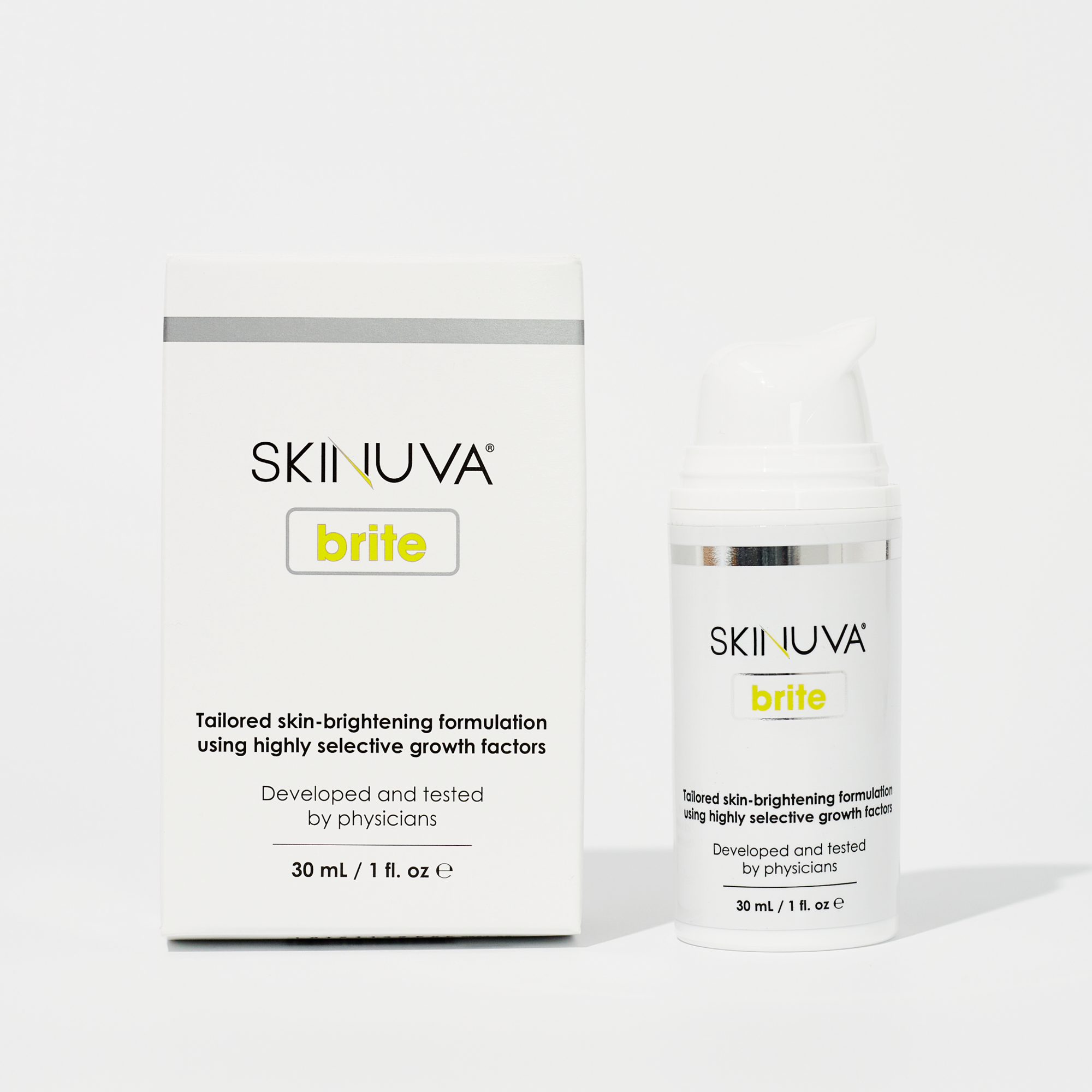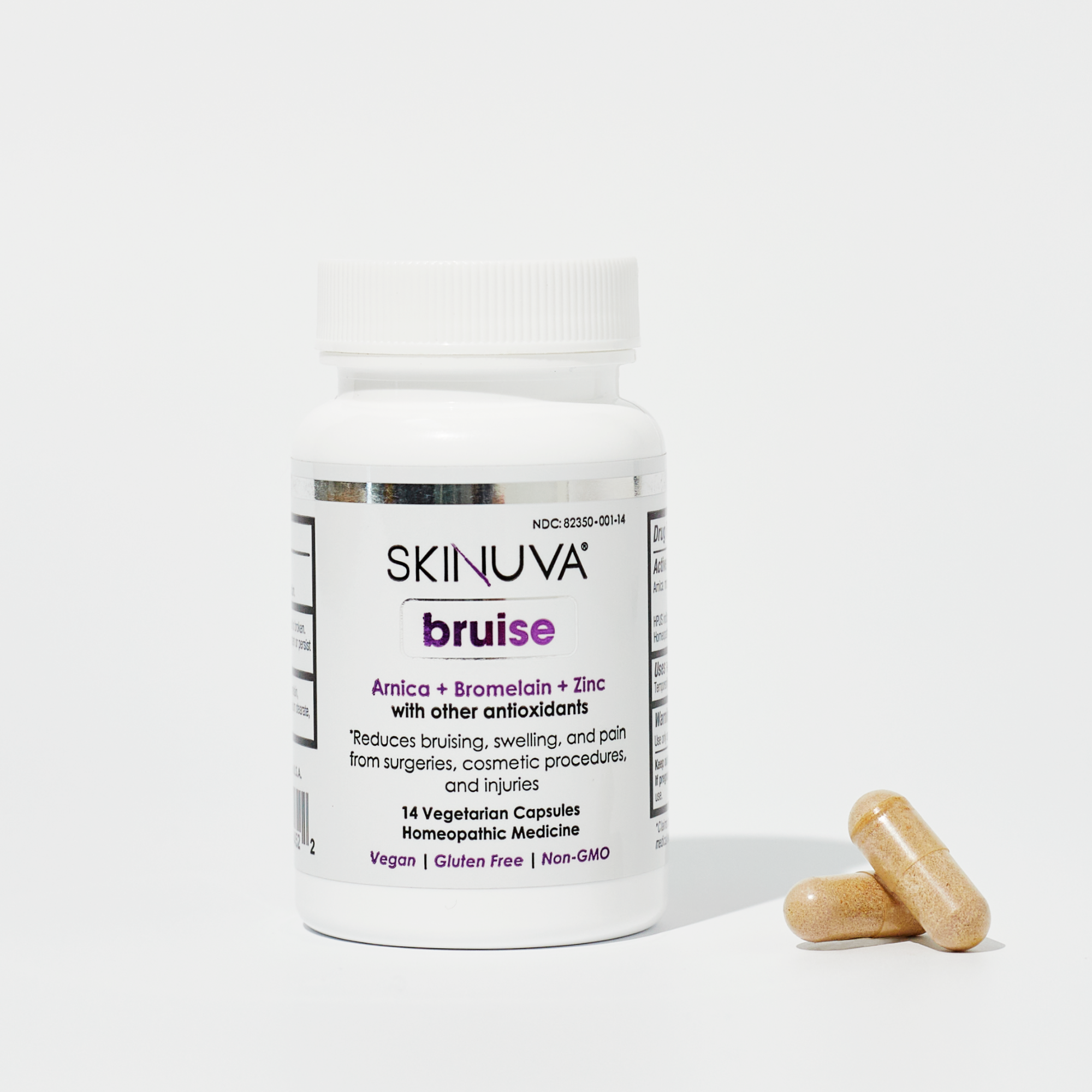
The Skinuva Story
The Skinuva line of products was founded by Dr. Christopher Zoumalan, a Board-Certified Ophthalmic Plastic and Reconstructive Surgeon. Inspired by his passion for helping patients feel and look good in their skin and his passion for science and medicine, he has dedicated the past several years researching wound-healing, hyperpigmentation and other skin issues to develop the most advanced skin care products for his patients, colleagues and others.
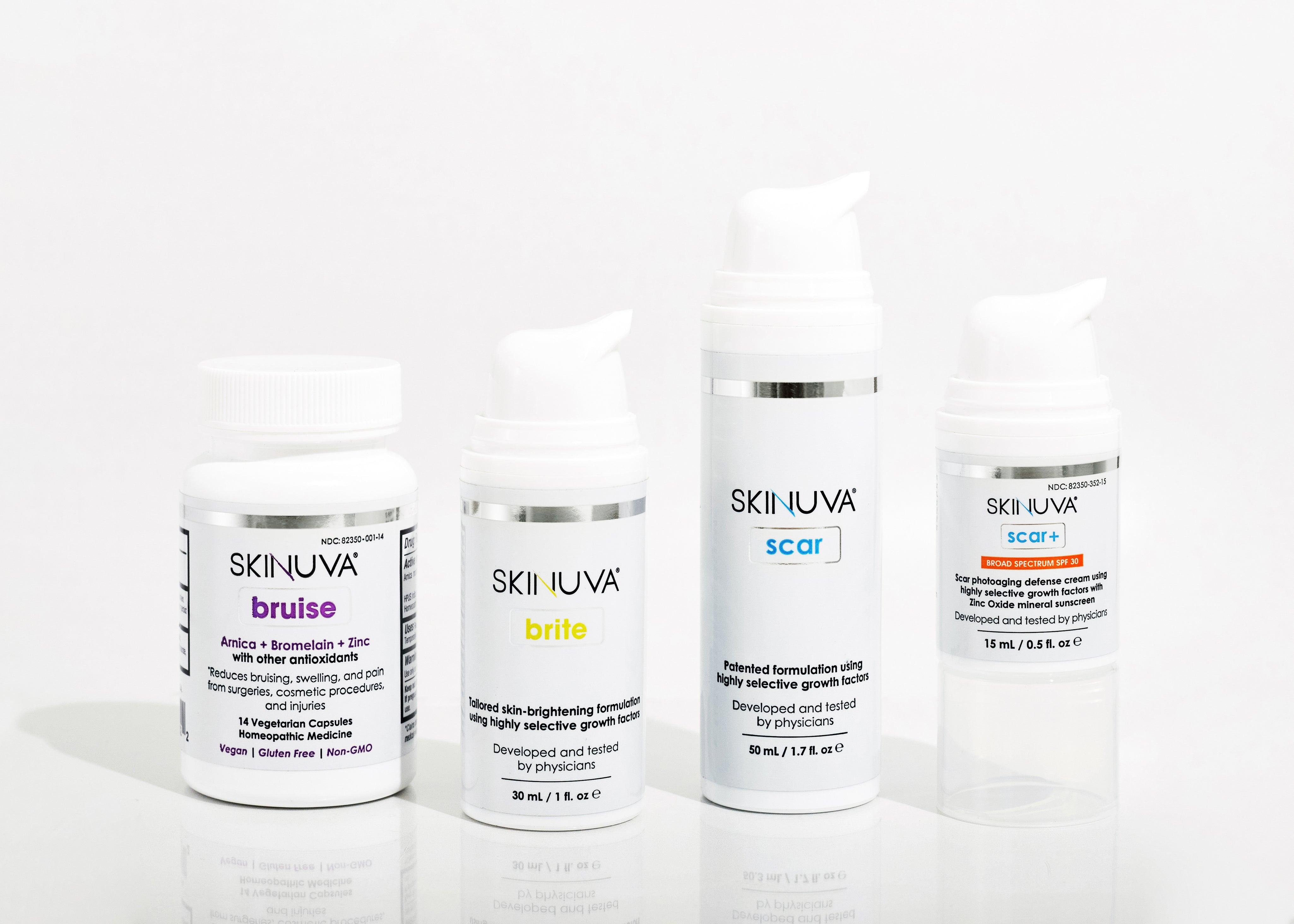
A Scientific Approach
Skinuva products are formulated with scientific ingredients and backed by clinical data, proving their safety and efficacy in improving scars, hyperpigmentation, and post-procedural healing.
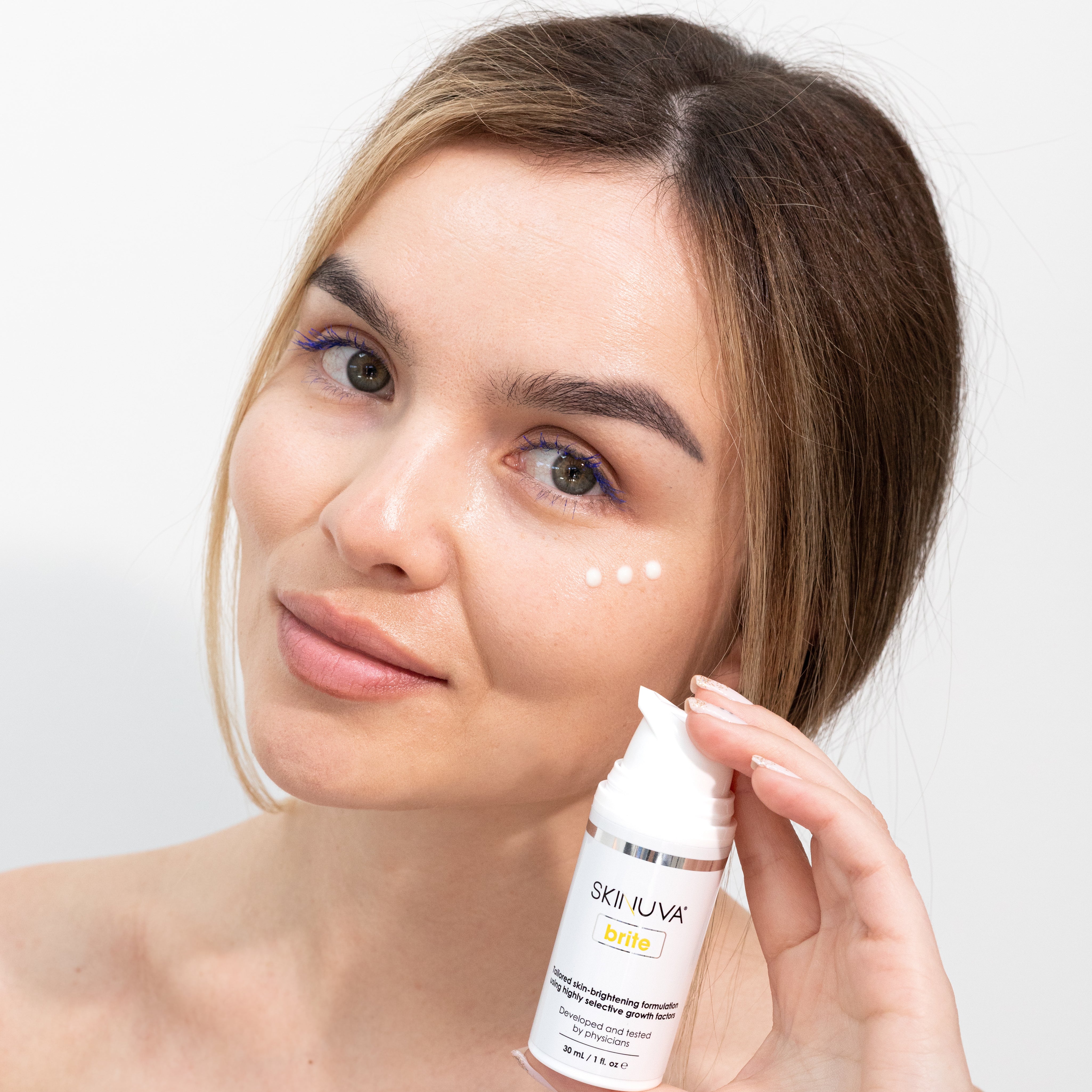
Professional skincare for everyone
Skinuva products are safe and suitable for all skin tones and types. With no harsh ingredients in any of our formulations, Skinuva Scar. Skinuva Brite, and Skinuva Scar+ SPF are safe for long term, daily use.
